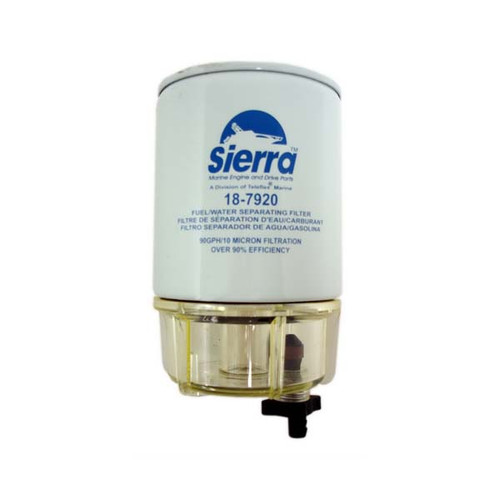I have a problems with water in my tanks. I have the same caps. There is no obvious o-ring or gasket on mine. Probably not coming in from fuel fill. I would guess condensation in tank or bad fuel load. When you empty the engine filter you need to drop the Yamaha can filters, dump them into a plastic container, re-fill with the fuel on top and dispose the water. Here is what happened one year. See that little bit of fuel on top? The rest is water.
View attachment 17183
I installed the Sierra fuel-water separator in place of the standard Yamaha cans. This allows me to see if I'm accumulating water and to drain it without dropping the can. They spin on to your existing filter base so you can always go back to OEM anytime.
Sierra 18-7941-1 Fuel Water Separator Assembly available at Wholesale Marine. We offer Sierra Marine products at lowest prices with superior service.

www.wholesalemarine.com
I have had at least two seasons where I had what I believe was phase separation immediately after adding stabilizer. I installed Sierra fuel filters with clear bowls to allow me to monitor water in the fuel and easily drain.
12/14/18 Added fuel stabilizer and ran boat to mix it up and get into the engines. Didn't get far. Boat ran like crap. Barely made it back to marina. This is what came out of filters. Small amount of something on the surface (maybe fuel) and the rest water? Nothing separates out overnight. After dumping this out I installed Sierra filters and used the remaining fuel without incident.














